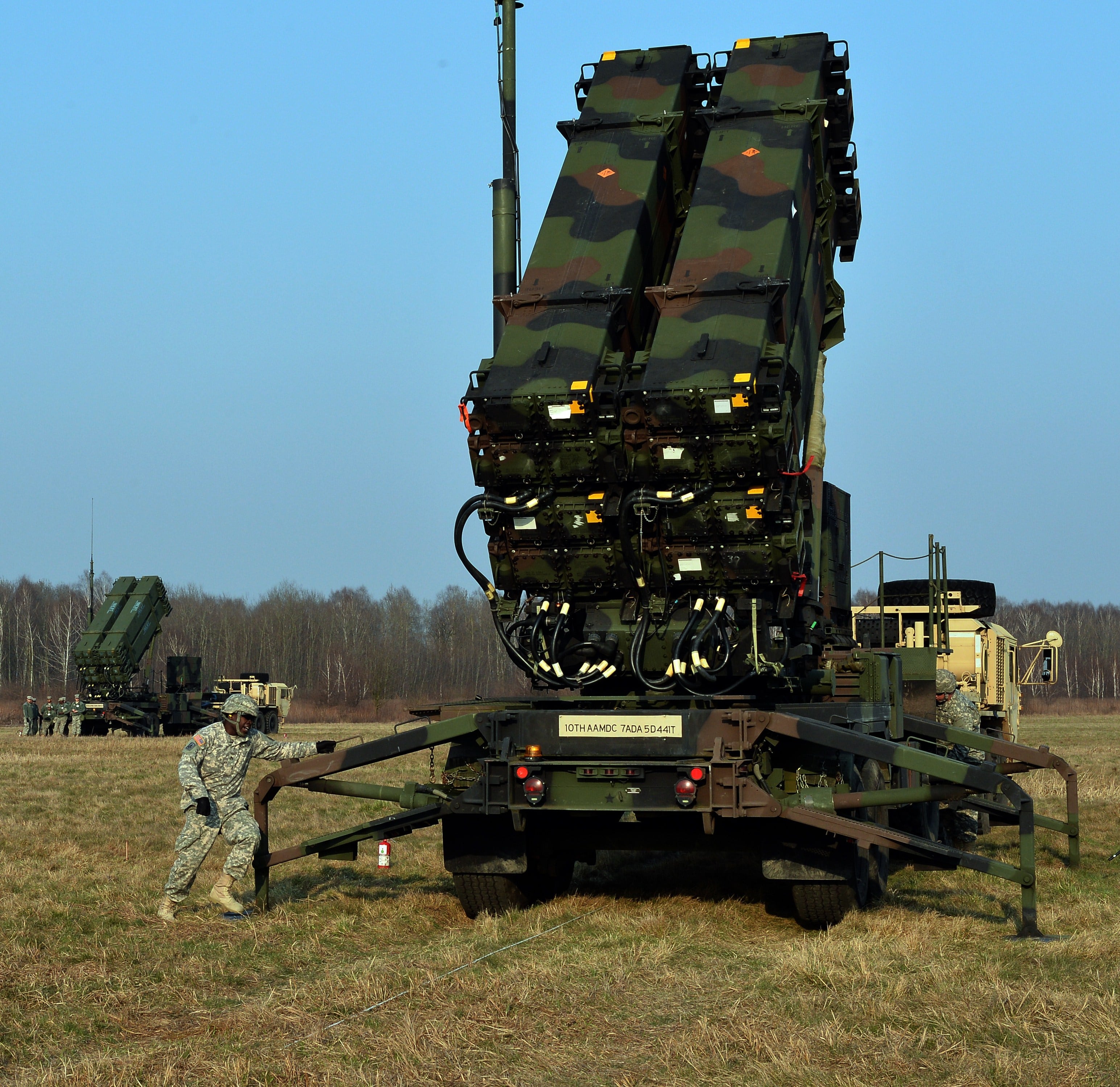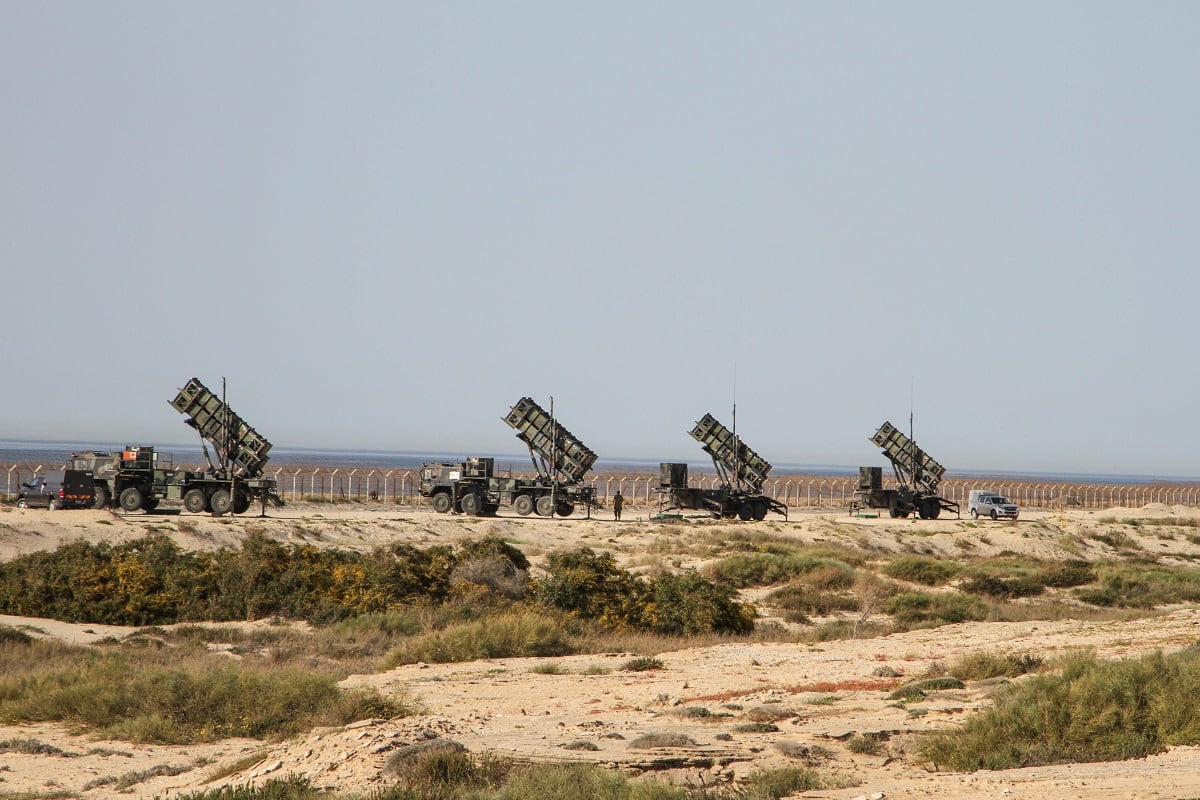WASHINGTON — Former Polish defense minister Tomasz Siemoniak is pressing the government for answers on the fate of its plans to buy the Patriot air-and-missile defense system from the United States.
While the contract to deliver the first two Raytheon-made Patriot batteries is a done deal and being executed, questions have surfaced about whether the Polish government intends to fund plans to procure a total of eight batteries, which was supposed to go under contract in a second phase.
RELATED

Reports from Polish news outlets indicate that the second phase of the Wisla program — the name for the Patriot acquisition in Poland — might not be funded, at least not until after 2026.
The government approved a new 10-year spending plan from 2017 through 2026, keeping it classified, but details have leaked that Wisla Phase 2 is not included in that plan, according to reports.
A spending plan review is expected in 2022, and it’s unclear whether the funding to cover the remaining six Patriot batteries will be included as well as Poland’s plans for a short-range air defense system — the Narew program.
In an “interpellation” sent to the current defense minister, Mariusz Blasczak, in early May — but not posted on the Polish government’s website until March 13 — Siemoniak, who is serving as a member of parliament, said, according to a translation, that the Ministry of National Defense had not taken any steps to sign a contract for the second phase. He demanded answers on whether the newly approved defense spending plan, in fact, contained funding for it.
An interpellation is an official point of inquiry that a member of parliament can make to a government minister of which the minister is required respond publicly, except when answers must be kept classified due to reasons of national security.
Siemoniak said if the government did not include plans to fund the second phase of the Wisla program, he wanted to know why and whether that meant a full cancellation of the second phase or just a delay past 2026.
He also noted that during the second phase of the program, Polish radars developed by PIT-RADWAR SA — part of the government-owned Polish Armaments Group — would be integrated into Patriot as well as a Northrop Grumman-made command and control system, dubbed the Integrated Battle Command System (IBCS).
Siemoniak asked if there were plans to integrate those radars sooner than 2026, if there is no funding for Wisla Phase II inside of the 10-year plan.
Yet, if the Polish government does have plans to fund the second phase, Siemoniak wants to know whether those funds would cover the second phase in its entirety or just in part.
RELATED

The Wisla program has experienced minor and major hiccups from the very beginning. The government made moves to rapidly acquire a missile defense system shortly after Russia annexed Crimea in 2014.
There were many times where those following the possible procurement thought it would fall through. Poland first selected Patriot in 2014, but with a change in government, the new president wanted to take another look at the options available for a medium-range system.
The government ultimately settled on Patriot, but caught industry off guard when it said it wanted to incorporate Northrop’s IBCS that is in development to be the command-and-control system for the U.S. Army’s future integrated air-and-missile defense system. IBCS’ initial operational capability is delayed, but Northrop has a way to offer a version of the system for Poland’s Patriots sooner. And a Yockey waiver, which is needed to sell components that have yet to complete Pentagon testing, was granted for Poland to procure the system ahead of the U.S. Army.
The Poles also wanted 360-degree detection capability, which the current Patriot lacks. Poland plans to procure 360-degree radars for the Wisla program later. The U.S. Army is also working toward the procurement of a new radar for its IAMD, but the service may be stepping back from requiring the sensor have 360-degree detection capability.
The country also slowed the procurement process to go through painstaking offset negotiations to ensure those met legal requirements as well as goals the government had set for the program. The country wanted at least 50 percent domestic industrial participation.
But after years of laboring over details, Poland signed a letter of offer and acceptance in March 2018 with the U.S. government to buy Patriot. The LOA, however, only covers the first two Patriot Configuration 3+ batteries, the latest version of the system, as well as IBCS and the Lockheed Martin-made Patriot Advanced Capability-3 Missile Segment Enhancement missiles.
Delivery is expected in 2022.
One of the more major areas of concern when it comes to a possible delay or outright cancellation of the second phase of the Wisla program is that some major capabilities were planned to be implemented during that time to include more robust participation from Polish industry.
And, according to Raytheon, the subsequent phase beyond the first two batteries would include the acquisition of additional Patriot fire units, gallium nitride-based, 360-degree active electronically scanned array radar and a low-cost interceptor missile called SkyCeptor.
Jen Judson is an award-winning journalist covering land warfare for Defense News. She has also worked for Politico and Inside Defense. She holds a Master of Science degree in journalism from Boston University and a Bachelor of Arts degree from Kenyon College.






